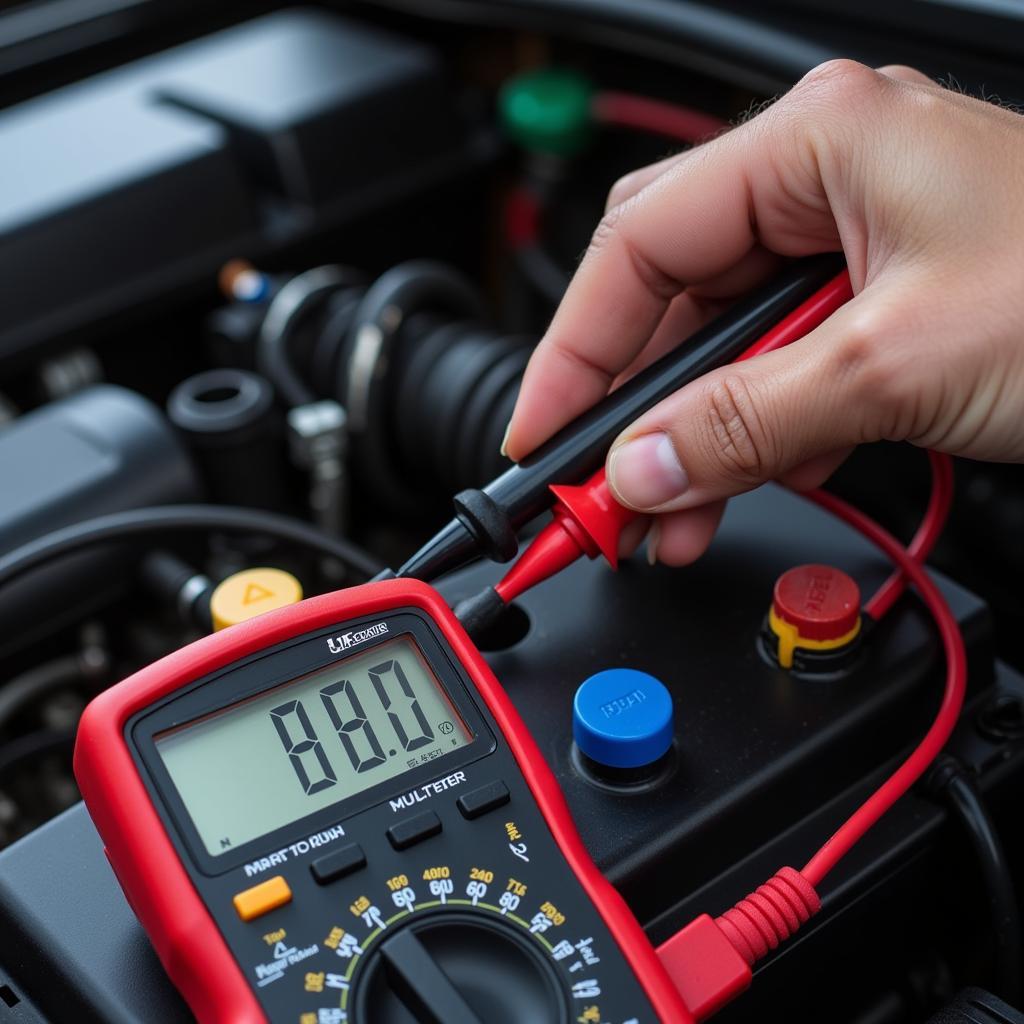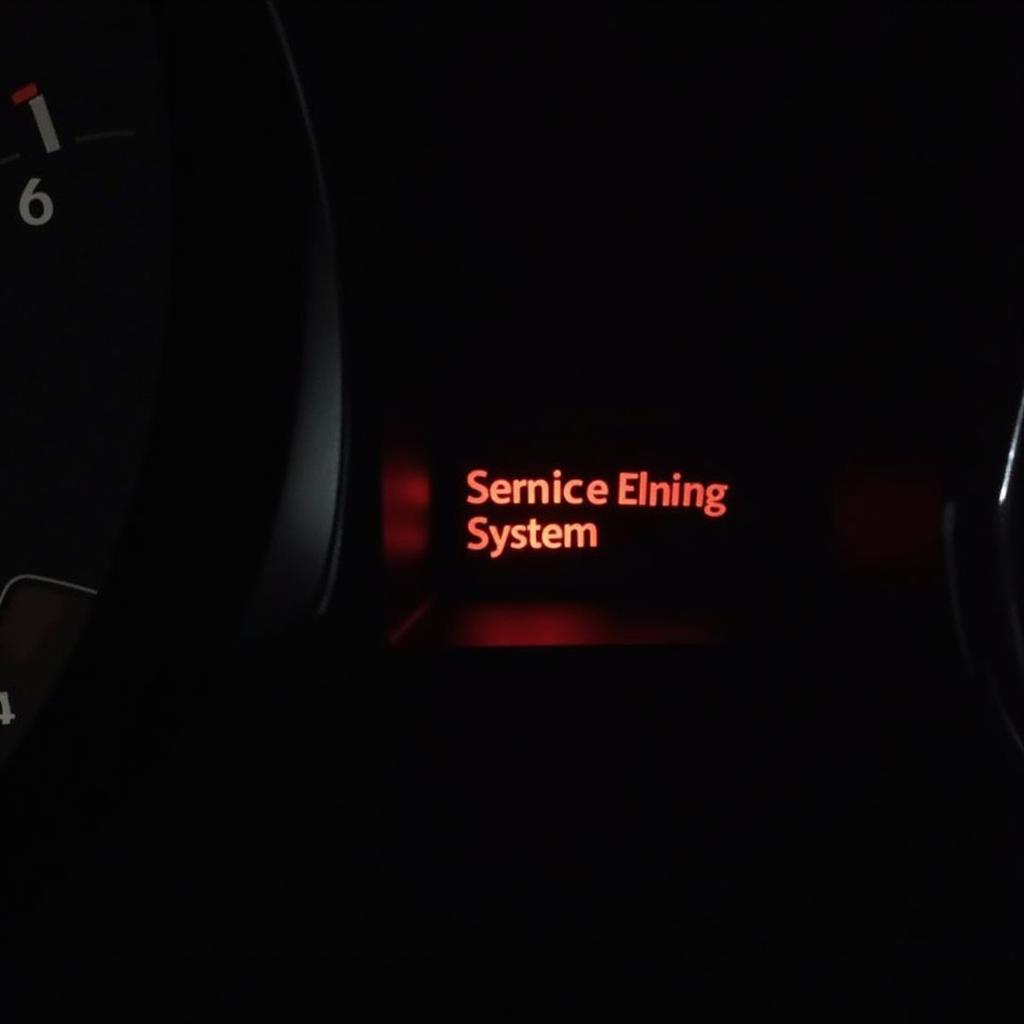A dead car battery is frustrating, especially when it happens unexpectedly. Learning how to test for car battery drain can save you time, money, and a lot of headaches. This guide provides a comprehensive overview of the process, empowering you to diagnose and even fix the problem yourself. 2012 f250 brake fluid low warning af
Understanding Car Battery Drain
Battery drain, also known as parasitic draw, occurs when something in your vehicle continues to consume power even when the ignition is off. This can range from a simple interior light left on to a more complex electrical fault. Identifying the source of this drain is key to resolving the issue.
 Testing Car Battery Drain with Multimeter
Testing Car Battery Drain with Multimeter
What Causes a Car Battery Drain?
Several factors contribute to car battery drain. Common culprits include faulty alternators, interior lights, glove box lights, door switches, and even aftermarket accessories like stereos and alarms. Diagnosing the problem requires a systematic approach.
How to Test for Car Battery Drain: A Step-by-Step Guide
Testing for car battery drain is a straightforward process with the right tools. Here’s a step-by-step guide to help you:
- Gather your tools: You’ll need a multimeter set to measure DC amps and a test light.
- Prepare your vehicle: Park your car on a level surface, turn off the ignition, and remove the key. Close all doors, turn off all lights, and ensure no accessories are running.
- Disconnect the negative battery cable: This isolates the battery from the vehicle’s electrical system.
- Connect the multimeter: Connect the multimeter’s red lead to the negative battery terminal and the black lead to the disconnected negative battery cable.
- Observe the reading: The multimeter will display the current draw. A reading of over 50 milliamps (0.05 amps) typically indicates excessive drain.
- Isolate the circuits: Begin removing fuses one at a time while observing the multimeter reading. A significant drop in the reading after removing a specific fuse indicates the circuit connected to that fuse is the source of the drain.
- Pinpoint the culprit: Once you’ve identified the circuit, use a test light to check individual components within that circuit to locate the exact source of the drain.
 Checking Fuses for Car Battery Drain
Checking Fuses for Car Battery Drain
What is a normal parasitic draw on a car battery?
A normal parasitic draw should be around 25-50 milliamps. Anything significantly higher suggests a problem. “A small drain is acceptable, but a large, continuous drain will eventually kill your battery,” explains automotive electrical expert, John Miller, from Automotive Electrical Solutions.
Using a Test Light for Car Battery Drain
A test light provides a visual indication of current flow and can be useful for pinpointing specific components causing the drain. Connect the test light between the negative battery terminal and the disconnected negative cable. If the light glows brightly, there’s a significant drain. Systematically disconnect components within the suspected circuit until the light dims or goes out.
How long does it take for a parasitic drain to kill a car battery?
The time it takes for a parasitic drain to kill a battery depends on the severity of the drain and the battery’s condition. A small drain might take weeks, while a large drain could deplete a battery overnight. “Even a seemingly insignificant drain can have a cumulative effect over time, leading to a dead battery,” warns Miller.
Preventing Car Battery Drain
Preventing car battery drain involves adopting good habits and regular maintenance. Always double-check that interior lights are off, and avoid leaving accessories plugged in when the car is not running. 2012 f250 brake fluid low warning advance trac, ford escape 2012 anti lock brake system warning light
How often should I test for car battery drain?
Regularly testing for car battery drain, especially if you notice your battery struggling, is a good preventative measure. It is recommended to test it every few months or if you experience any starting issues. “Proactive testing can identify potential problems before they become major headaches,” adds Miller. brake fluid warning label
Conclusion
Testing for car battery drain is a valuable skill for any car owner. By understanding the process and following the steps outlined in this guide, you can quickly diagnose and resolve the issue, saving yourself time and money. Regular maintenance and preventative measures can also help ensure your battery stays healthy and reliable.



